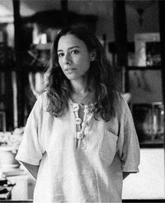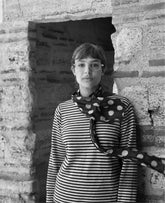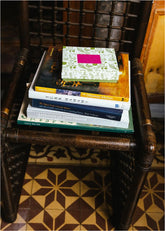SCRUB THE SURFACE: ROKSAN SARFATI

1. Hi! Can you briefly introduce yourself?
My name is Roksan. A childhood spent between cultures and my family’s background in textiles brought me close, from an early age, to the world of fabrics, colors, and things made by hand. After studying fashion design in Italy, I worked in the industry for many years. But over time, my interest in sustainability took precedence, and I turned that interest into a dual-centered production and design system spanning Turkey and Sri Lanka. Today, through my own brand, I design timeless pieces that reinterpret ethical production and traditional craft.
2. If you had to describe Istanbul in three words, what would they be?
Layered, poetic, impatient.

3. Can you share your first memory of a hammam? What role does hammam culture play in your life?
In the first hammam I ever visited as a child, I was mesmerized by the strong, free presence of women’s bodies disappearing into the steam. It felt like stepping into a time tunnel. For me, the hammam isn’t just a place for cleansing; it’s a ritual of female solidarity, silence, and transformation. A moment to slow down and reconnect with the body.
4. Which traditional crafts or artisans have had the strongest impact on you, and why?
The handwork of the women I work with in Sri Lanka and the cutting skills of the artisans in our workshop in Balat, Istanbul, have been among the most influential. Each pair of hands carries both patience and a story. These crafts feel like a tangible link to the past.

5. You produce together with women in Sri Lanka. How has that experience shaped you?
Working with these women has transformed me not only as a designer but as a person. By incorporating their own experiences, color preferences, and the habits of their hands into the designs, the resulting pieces are richly layered and deeply rooted. This process, infused with ancient knowledge from different geographies, has guided my design philosophy toward something more introspective and respectful.
6. What aspect of Zeyrek Çinili Hamam’s architecture or atmosphere has moved you most?
The way light filters through the dome. That light gliding through steam feels both real and dreamlike. Combined with the silence of stone, the space enters a dimension beyond time.

7. In the hammam, there’s a moment when silence takes over—what’s the perfect soundtrack for that experience?
Nils Frahm – "Says". A wordless yet deeply emotional piece that echoes the slow dance of steam, stone, and water.
8. The hammam experience symbolizes slowing down. How do you take breaks in today’s fast-paced world?
I turn to nature. Especially in the mornings in Sri Lanka – sitting quietly by the ocean, just listening to the sound of water. I also find peace in material selection: focusing on fabric and color calms my mind and does me good.
9. How has the ocean changed your life?
The ocean has stretched me both physically and emotionally. Through surfing, I learned patience, surrendering to the wave, and reconnecting with my body. The rhythm of the waves taught me that life is an uncontrollable flow.
10. If your creative process were a traditional hammam ritual, which would it be and why?
It would be exfoliation. Like shedding excess layers from the surface, my design process is a journey of simplification and finding the essence.

11. If you could invite one artist or designer to the hammam, who would it be?
Louise Bourgeois. Her relationship with the female body, memory, and space speaks to me deeply. I’d love to encounter her in a space as layered as the hammam.
12. Is there an object you always carry with you, or a personal ritual you practice?
I always have my personalized swatch book and notebook with me. I also have a brief eucalyptus breathing ritual I do each morning.
13. In our collaboration, what elements inspired your design process?
What moved me most in this collaboration was the hammam’s timeless atmosphere and its collective memory. That sheltered world shaped by steam, stone, and silence holds an ancient feminine knowledge and ritual. This sense of an inward, secure space aligned with Mah-Roc’s philosophy of making. Slowness, care, and symbolically charged details guided the design process.
14. Can you tell us more about the icons used in the collection?
The collection features symbols drawn from Zeyrek Çinili Hamam and inspired by Istanbul’s historic architecture, developed by Mah-Roc. Each icon carries a distinct meaning – some were inspired by a window form, others by a ceiling pattern. We embedded these symbols into the garments themselves, like the hidden conversations and silent understandings between women in the hammam: unseen, yet deeply felt. These icons, too, function as invisible details that forge an inner connection.










